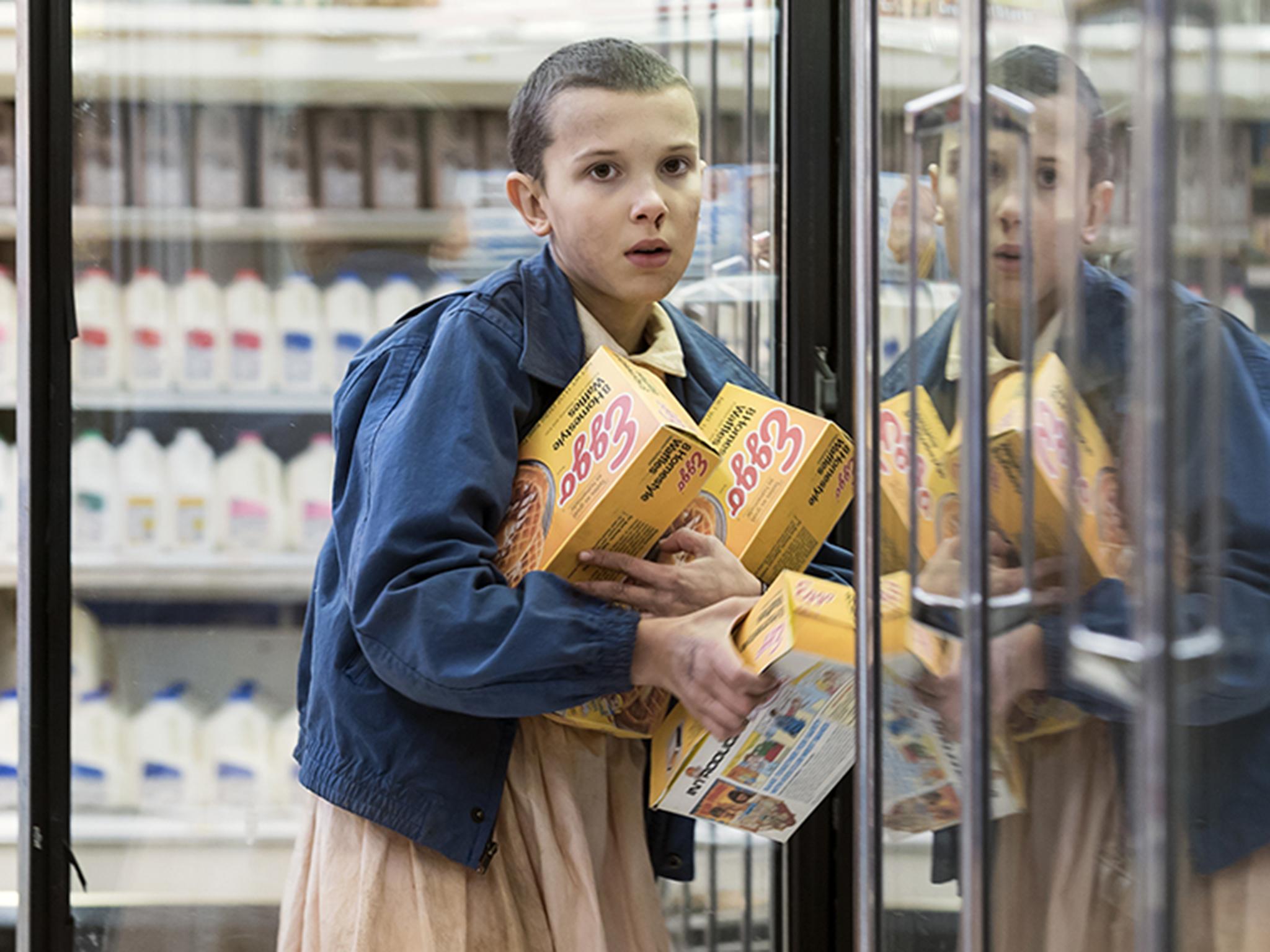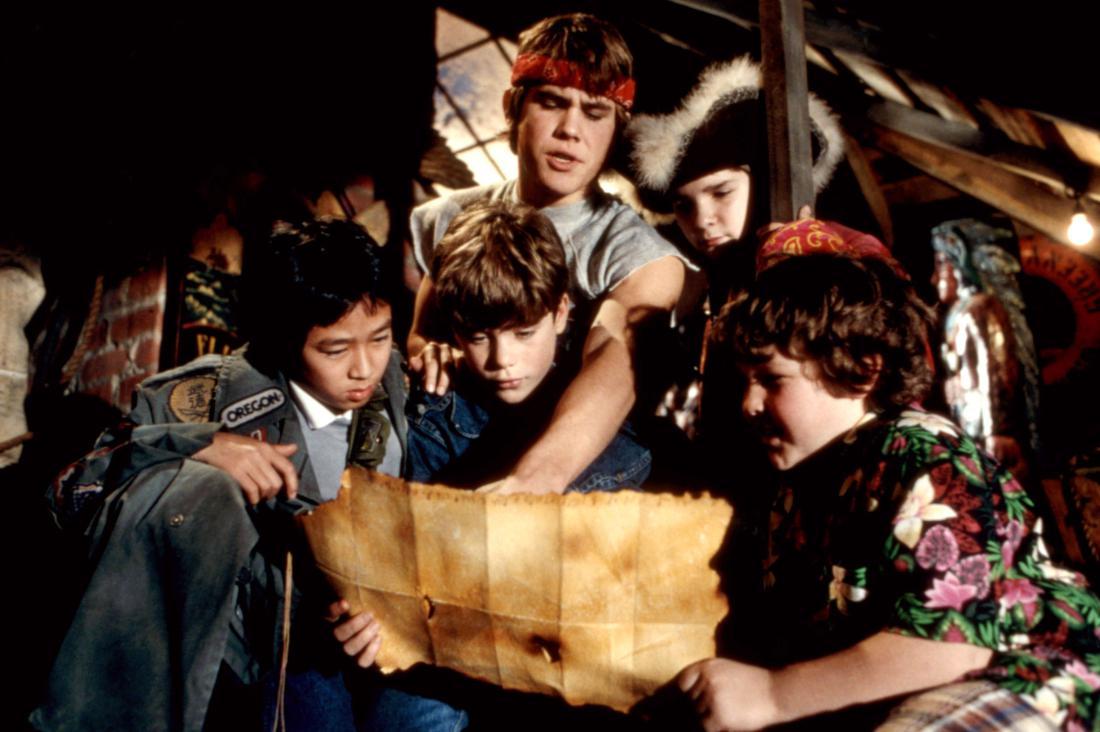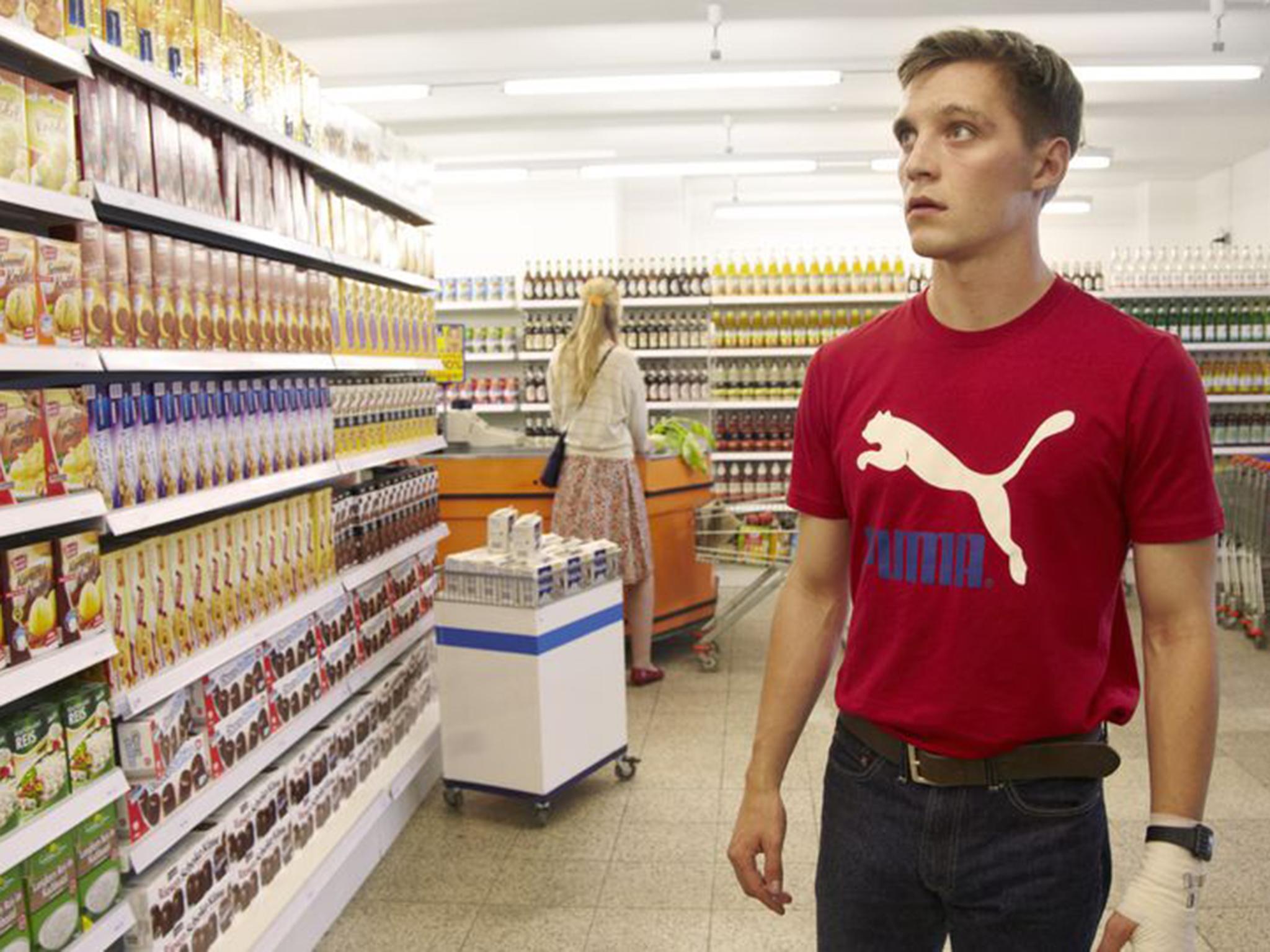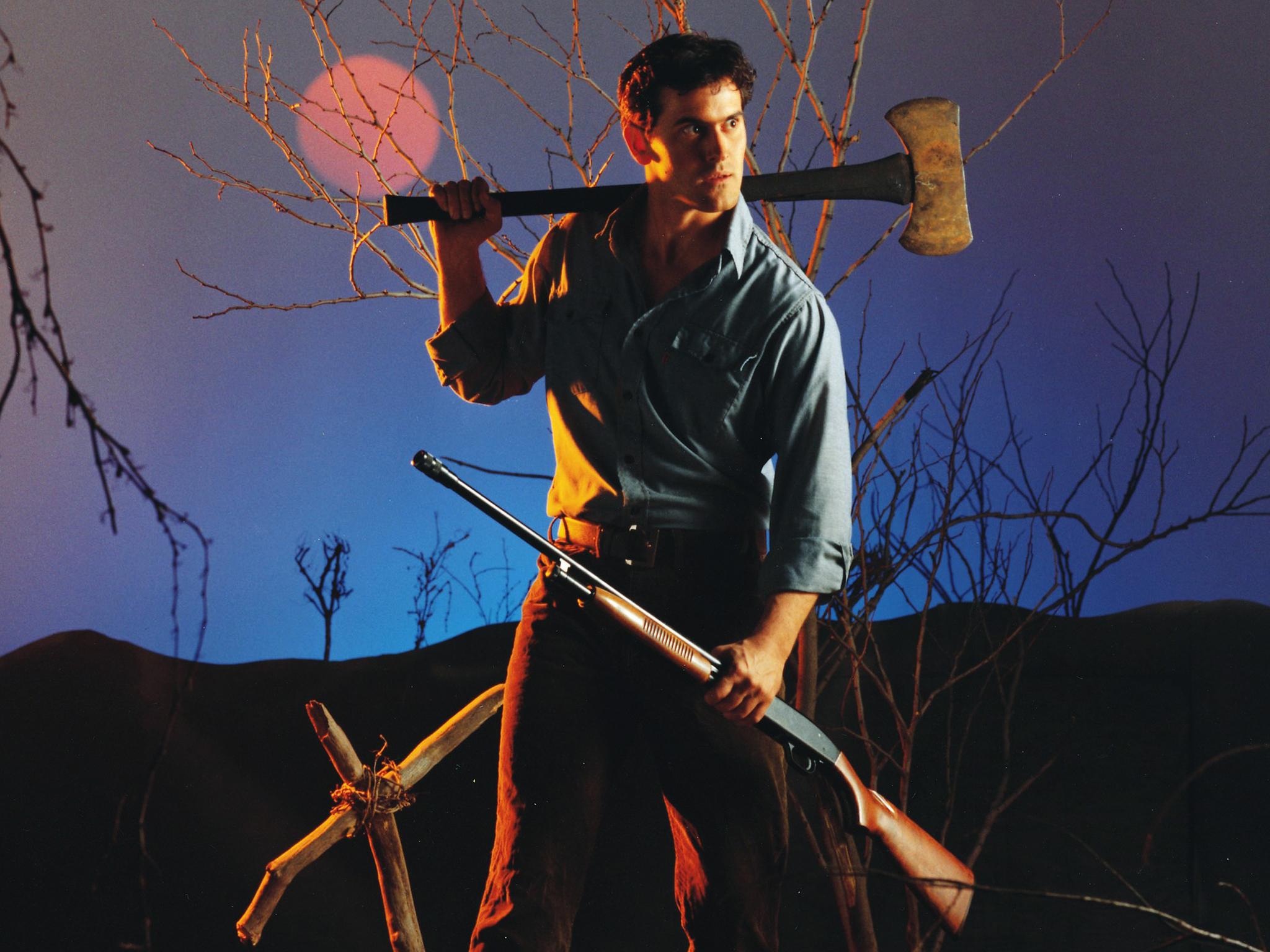From Stranger Things to IT, why do we love TV shows from the Eighties so much?
Stranger Things is back on our TVs, and with it a new wave of nostalgia for the darker side of a decade long gone. But why do TV and cinema love the Eighties so much? Maybe because we survived them, says David Barnett

Those with access to streaming service Netflix might already be well underway with their binge-watch of season two of the hit US drama Stranger Things, which has dropped just in time for Halloween.
The first series of the Duffer Brothers’ Eighties-set supernatural drama was the surprise hit of last year, seemingly coming out of nowhere and captivating audiences worldwide. It was the tale of Mike, Dustin, Lucas and Will, four friends in the fictional town of Hawkins, Indiana, who live out their lives with such typically 1980s pursuits as Dungeons and Dragons, BMX bikes, getting bullied by jocks and encountering the paranormal.
When Will goes missing, the three remaining friends become embroiled in the search for him along with the disappeared boy’s mother, played by Winona Ryder (an Eighties icon in her own right), and open up a world of shadowy government research facilities, escaped experimental subjects (the star turn of the series, Millie Bobby Brown as Eleven), and a horrific dimension that has swallowed Will.

Season two looks set to dig deeper into the mysteries that were unwrapped in the first eight episodes, and will no doubt wear its influences as proudly as season one did: anything and everything from that darker side of the Eighties. Watching Stranger Things you can spot nods to The Goonies, Stand by Me, Poltergeist, ET, Firestarter and whatever else the Duffer Brothers (twins Matt and Ross, curiously not born until 1984 so mining a decade they don’t actually remember) had to hand.
Nostalgia is a powerful weapon in the battle for ratings, and the Eighties is a particularly hard-fought territory. Which is a curious thing, because most of us who lived through it don’t particularly remember it being that great. But then, perhaps that’s sort of the point.
Stranger Things is by no means alone in setting its stall out in the Eighties. It’s a decade that works particularly well for horror or science fiction flavoured entertainment. Maybe this is because blockbuster horror movies were still packing out cinemas at the time – the Eighties is when the multiplex was born, replacing the tired old two or three screen local fleapit picture house – and people were first discovering the delights of home entertainment in the shape of video rentals. Movie franchises such as Nightmare on Elm Street, Friday the 13th and The Evil Dead were born in the Eighties; less discerning movie aficionados could find a wealth of imitators and low-grade schlocky shocks on straight-to-video delights including Driller Killer and Cannibal Holocaust.

It’s likely the latest wave of spooky-flavoured Eighties nostalgia was kicked off by JJ Abrams and Steven Spielberg’s 2011 movie Super 8, which thematically shares a lot of DNA with Stranger Things: a group of kids making their own movie (on the titular Super 8 film) come up against a creature released from government imprisonment through the auspices of a train crash.
This year, of course, we’ve had the big screen adaptation of Stephen King’s clown horror IT, set wholly in the 1980s and featuring a group of outsider kids brushing against a paranormal entity… well, you get the idea.
You can also throw into the mix the short-lived TV series Dead of Summer, a homage to the rampant slasher-attacks-highly-attractive-high-schoolers-at-summer-camp genre beloved of the decade; the San Junipero episode of Charlie Brooker’s Black Mirror (not spooky, but sci fi so enmeshed in the Eighties that it almost hurts) and Ernest Cline’s debut novel Ready Player One (being filmed by Spielberg for a 2018 release), which is set in a near-future where people spend their time plugged into a massive online simulation that often reads more like a list of Eighties pop-culture references than an actual novel.
The hugely popular comic book Paper Girls, by Brian K Vaughan and Cliff Chiang, is like an all-female version of Stranger Things, while the upcoming graphic novel Hollow Monsters by Monty Nero, which has quadrupled its Kickstarter goal with still more than a week to go, treads similar ground but placing the action in Eighties Britain.

Watch Apple TV+ free for 7 day
New subscribers only. £9.99/mo. after free trial. Plan auto-renews until cancelled.
ADVERTISEMENT. If you sign up to this service we will earn commission. This revenue helps to fund journalism across The Independent.

Watch Apple TV+ free for 7 day
New subscribers only. £9.99/mo. after free trial. Plan auto-renews until cancelled.
ADVERTISEMENT. If you sign up to this service we will earn commission. This revenue helps to fund journalism across The Independent.

The very real threat of nuclear war has also proved irresistible to contemporary writers, no more evident or superbly done than in the German series Deutschland 83, built around the real-life Nato training exercise Able Archer which ratcheted up international tensions in what was then East Germany, where it was believed that the simulation was actually a prelude to hostilities being launched.
The series was broadcast on Channel 4 last year and a sequel, Deutschland 86, dials up the Cold War stress even further and is due on our screens in 2018. A divided Germany, almost unthinkable today, is perhaps the epitome of the Eighties global political landscape, and similar ground was trod in this year’s movie Atomic Blonde, starring Charlize Theron and James McCoy.
There are logistical attractions to setting a narrative in the Eighties rather than the present day, chief among them the fact that there were no mobile phones or internet, the twin demons to any writer wanting to build up tension. How many stories would have been completely ruined if the main character could simply Google the answer to a question or use their phone to call for help when trapped somewhere dreadful?
Add to that the fact that Eighties kids just roamed around a lot more than they do today, which means no-one freaks out and phones the police when a bunch of kids set off into the woods for an adventure. The aforementioned Stand By Me, Rob Reiner’s adaption of a Stephen King short story called The Body, was released in 1986 but set in 1959. Its central plot of a gang of boys heading off searching for a corpse, uncontactable and untraceable, was something Eighties kids could have an affinity with – maybe more than modern kids can relate to the free-range antics of the Stranger Things gang.

But perhaps the main reason that we like stories set in the Eighties is that for all it was 30 years ago, there are so many resonances with the world today that the 1970s and the 1990s just doesn’t seem to afford.
Just like now, back in the Eighties there was a gung-ho former celebrity in the White House. We feared nuclear annihilation from Russia; today we wait for North Korea to start flinging bombs. Terrorism was high on the agenda with the IRA; today it’s Islamic extremism. We had Thatcher then, we have May today. The hated Poll Tax was birthed in the Eighties, Universal Credit is our modern version. There was a devastating recession in the early 1980s, and even some of the staunchest pro-Leave campaigners are predicting Brexit will usher in something similar.

For those of us growing up in the Eighties, it perhaps felt no different than any other age in which children grew up. As difficult as it might seem to modern kids, we didn’t miss what we didn’t have, what we couldn’t conceive of. No mobile phones, no internet, no Netflix, no Spotify, no Call of Duty. Give us a stack of 7” singles, a Grifter bike, a ZX Spectrum and a long, hot summer and we were fine.
Looking back, it was perhaps a dark decade. Unemployment, riots, AIDS, soundtracked by The Specials’ Ghost Town and with bleak nuclear annihilation drama Threads playing on our three-channel TV in the background. So it’s maybe no wonder that the Eighties is fertile ground for today’s film-makers, TV producers and writers. Horror isn’t just about jumps and shocks and what lurks in the shadows; it’s also about shining a light on our own realities.
But it feels like the real benefit of setting a story amid horrors real and imagined in the 1980s is the simple fact that, by and large, we survived them. We made it. We stepped back from the nuclear abyss, albeit briefly. Freddy Krueger haunted our dreams, but eventually we woke up. AIDS claimed lives, but was not the monolithic plague we were told it would be. Will disappeared in Stranger Things, but ultimately found his way home.
The more things change, the more they stay the same. Maybe the world is just as terrifying a place as it was in the Eighties, but perhaps the message we should be taking from the current revival of the decade as a backdrop for our darkest entertainments is that if we got through all that, then surely we can get through all this.
Join our commenting forum
Join thought-provoking conversations, follow other Independent readers and see their replies
Comments
Bookmark popover
Removed from bookmarks